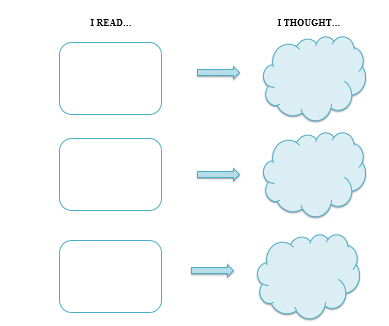
Learning Disability and ADHD- Providing Learning Support to Students
Students with learning disabilities and ADHD may often benefit from additional supports in the classroom to access the same material. Some of the work may need to be differentiated for them, which means providing different formats or reduced work or a separate medium/tool.
Following are ways to support their learning in the class and on assessments:
Support in Reading
- Put up sight words and other commonly used words (those that they are learning at that grade level) in the class.
- For students who are unable to read a class level text, provide either an audio version or a digital version with a text-to-speech option (often in built-in computers). Alternately, the teacher or a peer can read out the text to them. The teacher may also put protocols in place which require reading in pairs or groups to support students with reading difficulties.
- Break down the same text into smaller chunks and pair them with visuals. For example, rather than having 3-5 paragraphs on one page in small font, have 1-2 paragraphs with a bigger font, along with a visual: highlight difficult words and essential sentences.
- Provide vocabulary support for the text, for example, a glossary or word meanings with the text/worksheet.
- On tests, write questions and instructions precisely and with clarity.
Support in Writing and Spelling:
- For those who struggle with spellings or writing, worksheets can have a word box with commonly used and challenging words.
- Spellings should ideally be ignored (that is, not marked) in classwork and on tests.
- Provide computers if available, so that the student can type out their work, and use spell check and grammar check for the same- as needed.
- If handwriting is not the goal for the assignment or the student has difficulty in writing, allow the student to type out their answers, or use another format such as audio or video recording, or giving oral responses to the teacher. Alternately, provide a scribe, that is, someone to write for the student.
- Provide graphic organisers for assignments and on tests. Graphic organisers include flow charts, boxes, Venn diagrams etc. to help the student organise their thoughts and written work.
Examples of graphic organisers
- KWL Chart
| Topic | ||
|---|---|---|
| K: What I know | W: What I want to know | L: What I learnt |
| ||
2. Analysing or writing argumentative essays
| Main argument/thesis statement of the essay | ||
|
|
||
| Paragraph 1 | ||
|
Main point/argument/claim:
|
||
|
Evidence: |
||
|
Analysis/ your thoughts:
|
||
| Paragraph 3 | ||
|
Main point/argument/claim:
|
||
|
Evidence: |
||
|
Analysis/ your thoughts:
|
||
| Conclusion | ||
|
|
||

- For written assignments and tests, give sentence starters and questions as prompts to guide their thinking and writing.
- Provide multiple-choice questions (MCQs) whenever long answers are not required.
Support in Math:
- Provide a calculator wherever possible
- Allow students to use a chart for multiplication tables
- Provide formulae where possible so that the focus is on the concept and not memorising the formulae
- For younger kids, use concrete objects to explain math concepts as much possible, for example, beads or blocks or clay or any other readily available material- to teach concepts such as number sense, counting, operations, fractions, estimation, money sense, profit and loss etc.
- Link math concepts to everyday life and use material that they have in their environment.